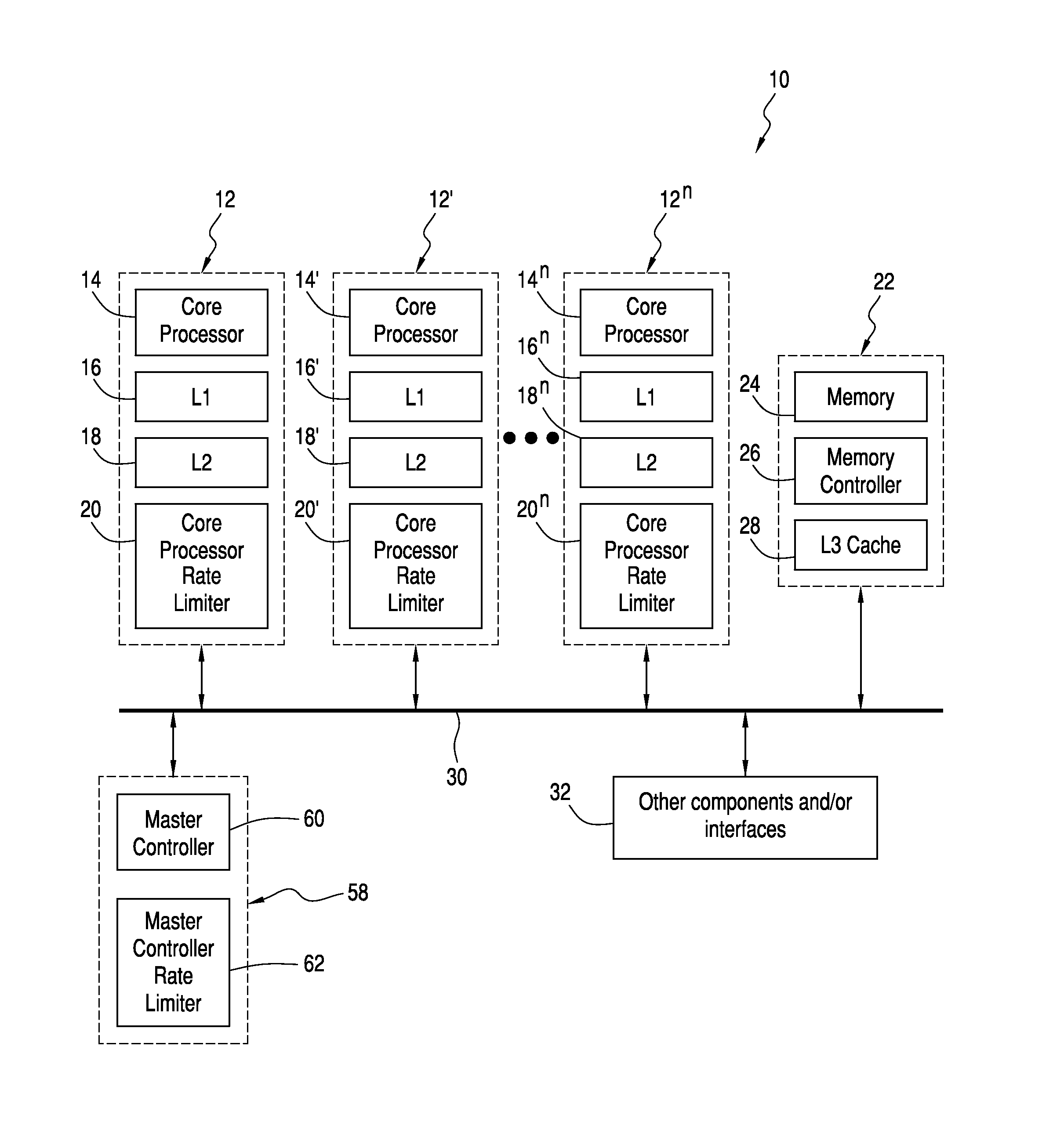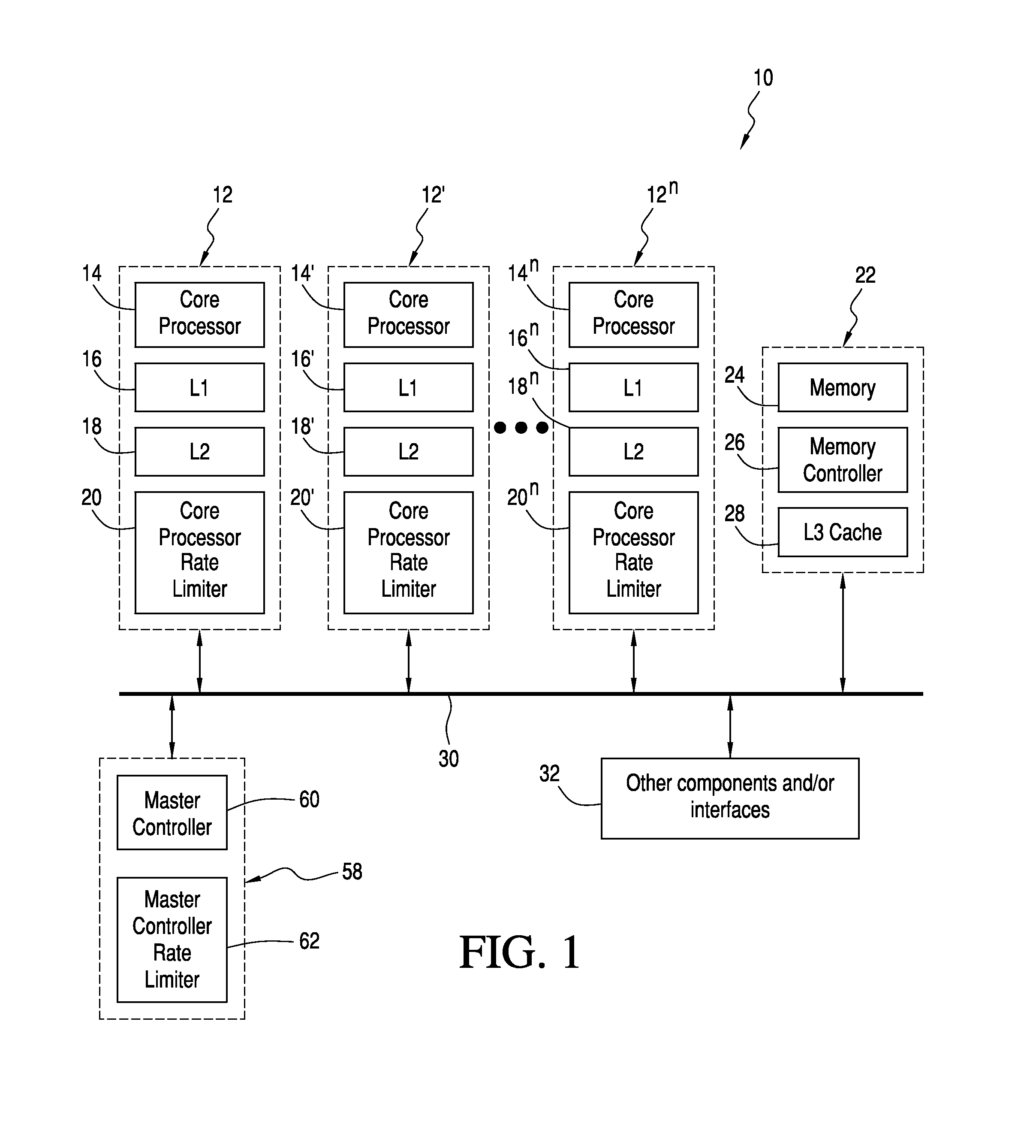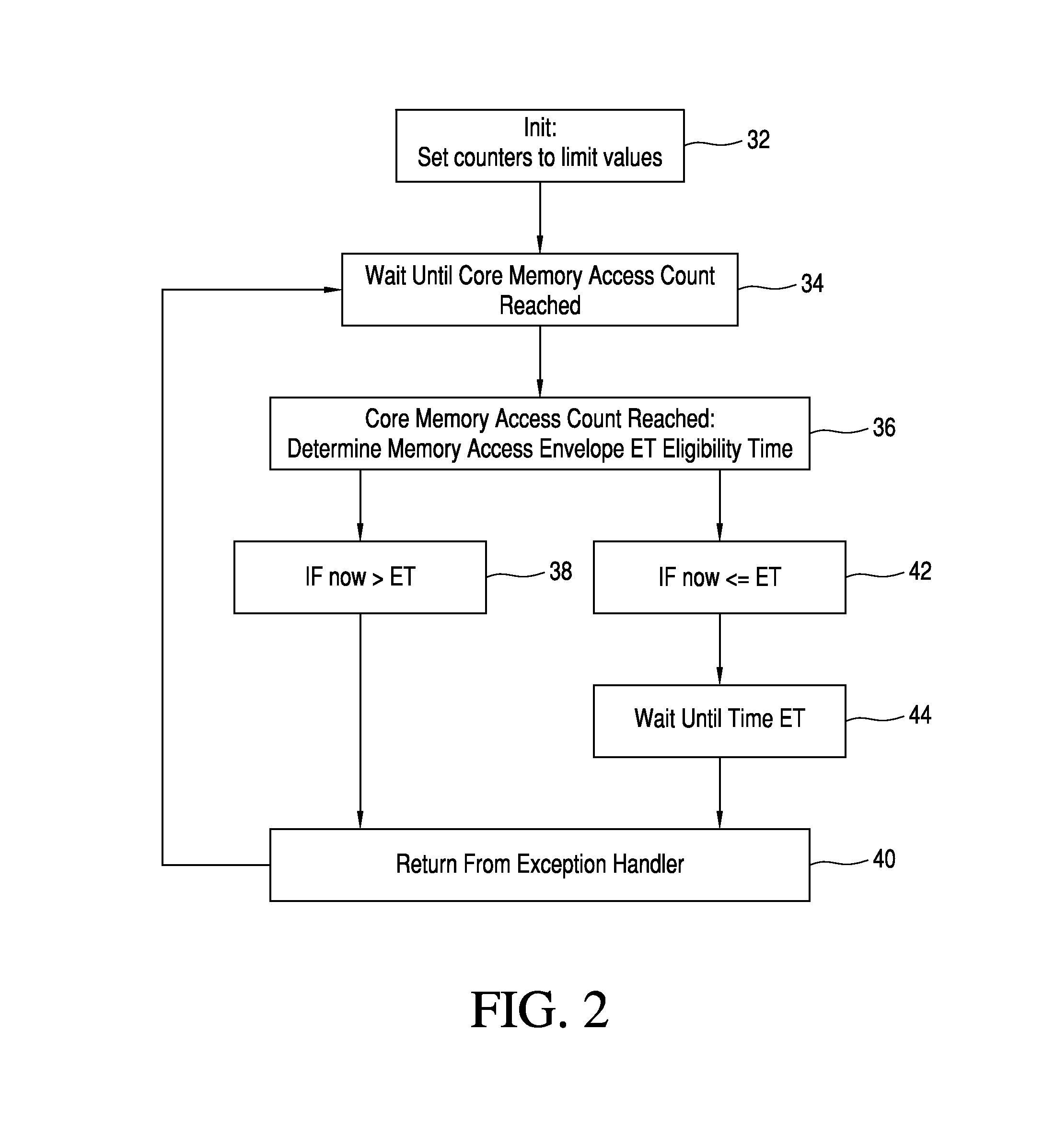Multi-core processor system configured to constrain access rate from memory
a multi-core processor and access rate technology, applied in computing, instruments, data conversion, etc., can solve the problems of inefficient hardware use, interfering with each other's performance, and typically disabled all but one core of the multi-core processor
- Summary
- Abstract
- Description
- Claims
- Application Information
AI Technical Summary
Benefits of technology
Problems solved by technology
Method used
Image
Examples
Embodiment Construction
[0019]Referring now to the drawings and the characters of reference marked thereon, FIG. 1 illustrates the multi-core processor system of the present invention, designated generally as 10. The multi-core processor system 10 includes a number of cores 12, 12′, . . . 12n. Each core 12 includes a core processor 14, 14′, . . . 14n. A dedicated core cache 16, 18; 16′, 18′; . . . 16n, 18n is operatively connected to each core processor 14, 14′, . . . 14n. Each dedicated cache 16, 18 typically includes an L1 cache 16 operatively connected to an L2 cache 18. L1 and L2 may include instructions and / or data.
[0020]Each core 12, 12′, . . . 12n includes a core processor rate limiter 20, 20′, . . . 20n operatively connected to the dedicated core cache 16, 18; 16′, 18′; . . . 16n, 18n. Each core processor rate limiter 20 is self-constrained to a defined traffic constraint envelope having a burst and rate component. Each traffic constraint envelope is preferably n-way, non-decreasing, and concave. T...
PUM
 Login to View More
Login to View More Abstract
Description
Claims
Application Information
 Login to View More
Login to View More - R&D
- Intellectual Property
- Life Sciences
- Materials
- Tech Scout
- Unparalleled Data Quality
- Higher Quality Content
- 60% Fewer Hallucinations
Browse by: Latest US Patents, China's latest patents, Technical Efficacy Thesaurus, Application Domain, Technology Topic, Popular Technical Reports.
© 2025 PatSnap. All rights reserved.Legal|Privacy policy|Modern Slavery Act Transparency Statement|Sitemap|About US| Contact US: help@patsnap.com



